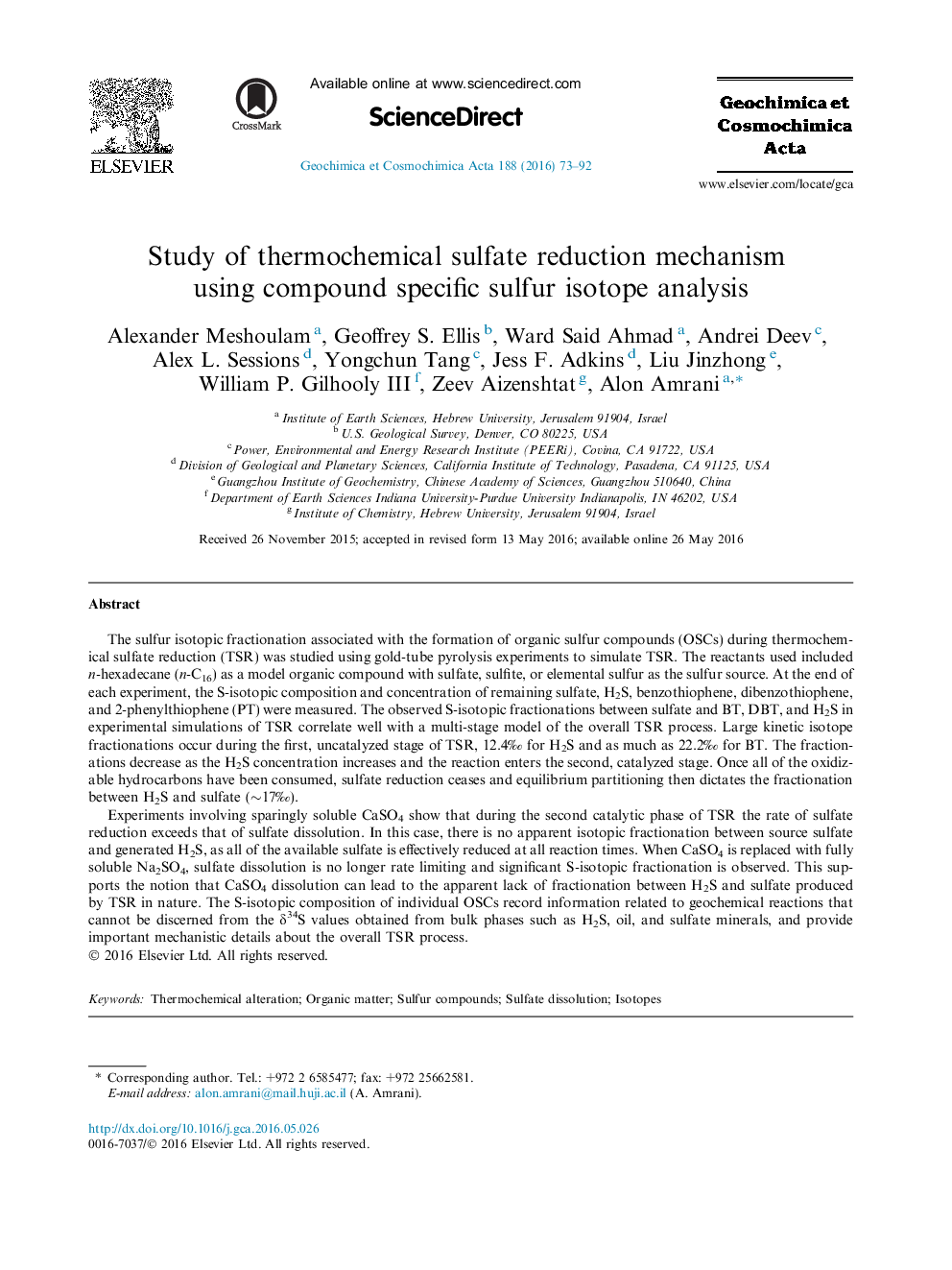| کد مقاله | کد نشریه | سال انتشار | مقاله انگلیسی | نسخه تمام متن |
|---|---|---|---|---|
| 4701762 | 1637969 | 2016 | 20 صفحه PDF | دانلود رایگان |
The sulfur isotopic fractionation associated with the formation of organic sulfur compounds (OSCs) during thermochemical sulfate reduction (TSR) was studied using gold-tube pyrolysis experiments to simulate TSR. The reactants used included n-hexadecane (n-C16) as a model organic compound with sulfate, sulfite, or elemental sulfur as the sulfur source. At the end of each experiment, the S-isotopic composition and concentration of remaining sulfate, H2S, benzothiophene, dibenzothiophene, and 2-phenylthiophene (PT) were measured. The observed S-isotopic fractionations between sulfate and BT, DBT, and H2S in experimental simulations of TSR correlate well with a multi-stage model of the overall TSR process. Large kinetic isotope fractionations occur during the first, uncatalyzed stage of TSR, 12.4‰ for H2S and as much as 22.2‰ for BT. The fractionations decrease as the H2S concentration increases and the reaction enters the second, catalyzed stage. Once all of the oxidizable hydrocarbons have been consumed, sulfate reduction ceases and equilibrium partitioning then dictates the fractionation between H2S and sulfate (∼17‰).Experiments involving sparingly soluble CaSO4 show that during the second catalytic phase of TSR the rate of sulfate reduction exceeds that of sulfate dissolution. In this case, there is no apparent isotopic fractionation between source sulfate and generated H2S, as all of the available sulfate is effectively reduced at all reaction times. When CaSO4 is replaced with fully soluble Na2SO4, sulfate dissolution is no longer rate limiting and significant S-isotopic fractionation is observed. This supports the notion that CaSO4 dissolution can lead to the apparent lack of fractionation between H2S and sulfate produced by TSR in nature. The S-isotopic composition of individual OSCs record information related to geochemical reactions that cannot be discerned from the δ34S values obtained from bulk phases such as H2S, oil, and sulfate minerals, and provide important mechanistic details about the overall TSR process.
Journal: Geochimica et Cosmochimica Acta - Volume 188, 1 September 2016, Pages 73–92
